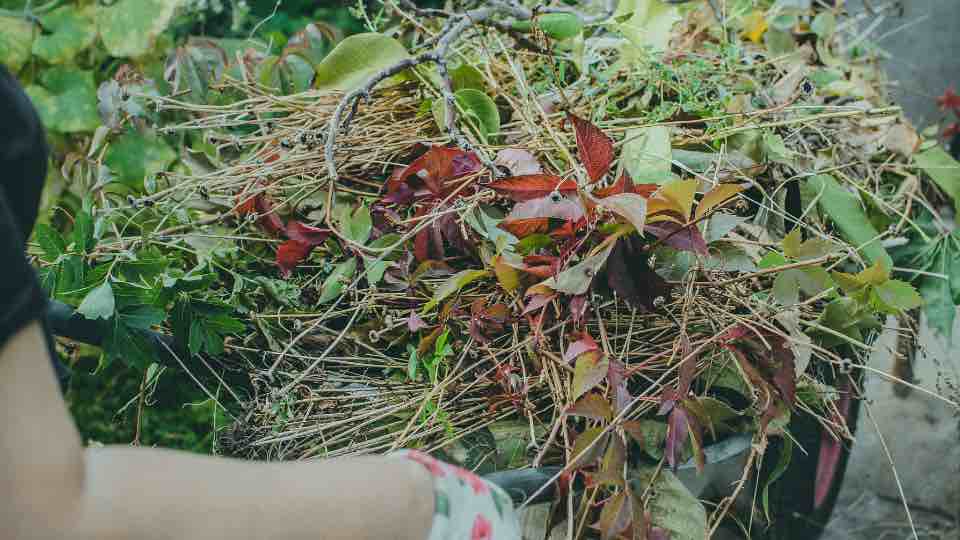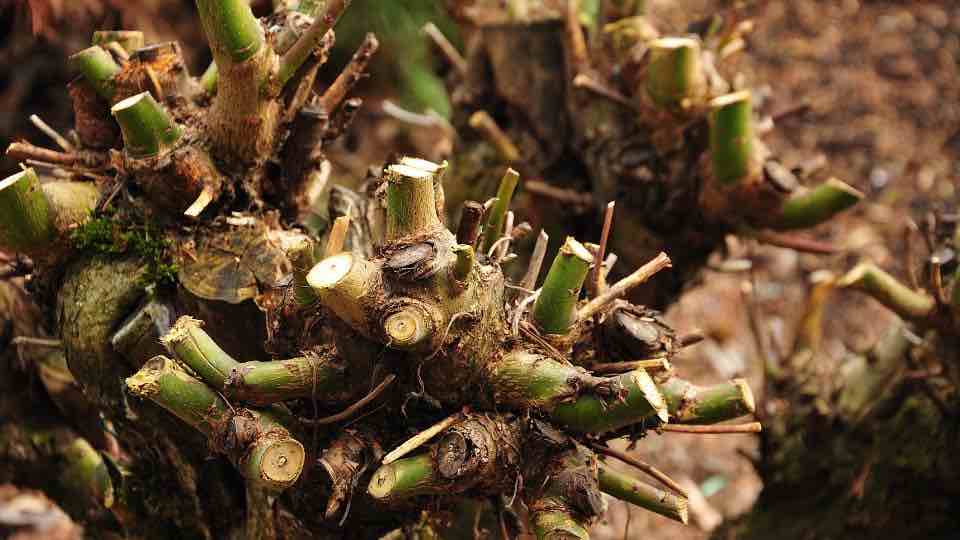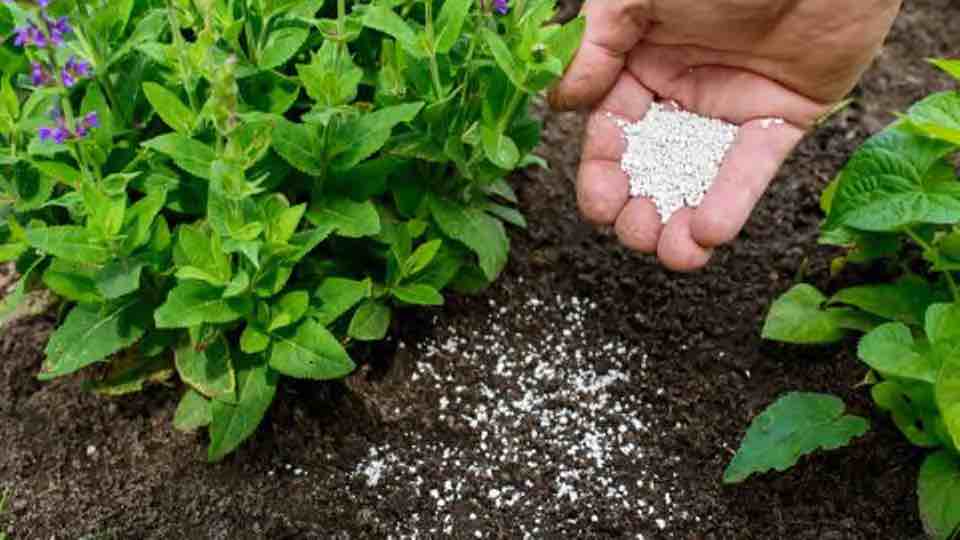Tips, Tricks & Hacks for Garden Spring Cleanup
Eric Johnson2023-09-25T01:27:09-05:00In This Article:
Tips, Tricks and Hacks to Make Your Garden Spring Clean-Up Easier
The First Step of Garden Spring Cleanup Is to Assess the Winter Damage
Assess and Prepare the Soil for Planting/Fertilize
Remove Garden Debris
Cut Back Perennials
Remove Dead Plants
Weed the Garden
Prune Trees and Shrubs
Make Sure the Tires on Your Lawn & Garden Equipment Won’t Slow You Down
At Treadworld, We’ve Got the Replacement Tires For Your ATV and All Your Lawn Care Equipment!

Tips, Tricks and Hacks to Make Your Garden Spring Clean-Up Easier
Once spring arrives, it’s time for you to start thinking about spring clean-up for your garden—to get it ready for the coming season and get a head start on planting. Making the effort right off the bat brings many benefits and will save you additional work later in the season. First, spring garden cleanup often involves preparing the soil for new planting, which will encourage successful plant growth with fewer issues. Additionally, a thorough spring cleanup can also allow for better air circulation, while reducing the risk of fungal infections or other plant problems, and at the same time promote pest prevention. And finally, your efforts can also help to improve the overall appearance of your garden, giving it a fresh and tidy look that will be the envy of all who see it. The tire experts at Treadworld are here to lay out steps for you to follow to complete a successful spring garden cleanup, along with tips, tricks and hacks to make the job quicker and more efficient. You’ll also find info on all the essential tools and equipment you’ll need, whether you have a large or small garden.
The First Step of Garden Spring Cleanup Is to Assess the Winter Damage
First, walk around and through your garden to assess the winter damage and to take note of any plants or areas that need specific attention. Pay close attention to areas that may have been damaged over the winter, such as trees, shrubs, and perennials—look for broken branches, signs of disease or pests, overgrowth and any other issues. If you plan to add new plants to your garden, decide where you want to plant them and what types of plants will work best in each location. Make a mental note of the weeds that will need to be removed.
Tips, Tricks and Hacks: you may find it helpful to use this assessment to develop a plan for the rest of your spring garden cleanup. Some find it helpful to take notes and photographs to document the condition of the garden and to plot your progress. If you have questions related to identifying plant species or diagnosing problems, take advantage of online gardening forums.
Assess and Prepare the Soil for Planting/Fertilize
Healthy soil is the foundation of a healthy garden, and assessing your soil during a garden spring cleanup can provide valuable insights into its fertility, structure, and overall health. Start by looking for signs of compaction, excessive clay or sand content, and the presence of organic matter. Healthy soil should have a crumbly texture, dark color (indicating the presence of organic matter), and a well-draining quality. Assess the drainage capacity of your soil. After a rain or thorough watering, observe how quickly the water is absorbed and how long it takes to drain. Proper drainage is important to prevent waterlogged soil, which can lead to root rot and other issues. Evaluate the growth and health of your plants from the previous season. Stunted growth, yellowing leaves, or poor overall health may indicate nutrient deficiencies, pH imbalances, or other soil-related issues.
Tips, Tricks and Hacks: Preparing the soil will in most cases require a shovel, a garden rake, a hoe, a wheelbarrow and perhaps a garden cart and possibly a garden fork or tiller. First, loosen the soil to a depth of around six inches. To conduct a soil texture test, take a handful of soil from different areas of your garden and squeeze it in your hand. Sandy soil will fall apart easily, loamy soil will hold its shape but crumble with gentle pressure, and clay soil will feel sticky and hold its shape. To perform a drainage test, dig a small hole in your garden and fill it with water, then observe how quickly the water drains. Good drainage is essential for healthy plant growth, so if the water drains too slowly or pools on the surface, it may indicate poor soil structure or compaction. To test the pH level of your soil, you can use a soil testing kit or a pH meter. Most plants prefer a slightly acidic to neutral pH range. Adjusting the pH, if necessary, can be done by adding amendments like lime to raise pH or sulfur to lower pH. FYI, earthworms are indicators of healthy soil. A higher population of earthworms suggests good soil structure and fertility. To check for the wriggly little buggers, dig a small section of soil and count the number of earthworms you find. To perform a soil compaction test, take a garden trowel or spade and push it into the soil. If it goes in easily and you can break up the soil with little effort, it indicates good soil structure. If the soil is hard and compacted, it may hinder root growth and nutrient uptake.
Once you know your soil’s nutrient levels, choose a fertilizer that provides the right balance of nutrients for your plants. Fertilizers are labeled with a series of numbers that indicate the percentage of nitrogen, phosphorus, and potassium, respectively. For example, a 10-10-10 fertilizer contains 10% nitrogen, 10% phosphorus, and 10% potassium. You can also consider adding a slow-release fertilizer to promote healthy growth. Spread these evenly to a depth of around 2 inches over your garden using a shovel or rake. This can help to provide the newly germinated seeds with the nutrients they need to grow strong and healthy. Then be sure to water thoroughly to help the soil absorb the amendments and promote healthy root growth.
One of the most important steps in a successful garden prep for spring is removing any debris that has accumulated during the winter. Getting rid of fallen leaves, twigs, branches and other clutter facilitates your plants getting the sunlight and nutrients needed for growth, while also helping to prevent diseases and pests from taking hold.
Tips, tricks and hacks and equipment: You’ll likely need your wheelbarrow or garden cart or garden wagon to help carry the winter refuse away from the garden. You may be able to use a leaf blower or a rake to gather leaves, sticks, and other debris into piles, then scoop it up with your hands or a shovel into a can or onto the tarp, and then drag the tarp to your compost pile or disposal area. And consider composting the debris instead of sending it to the dump. Composting provides a natural way to recycle leaves, grass clippings, and other yard waste that can be added to a compost pile to create nutrient-rich compost, ideal for use in garden beds. Be sure to avoid composting any debris that may be diseased or infested with pests, as this can spread the problem to your garden. If in doubt, it’s best to dispose of the debris.
Perennial plants will come back year after year, while annuals and biennials will only live for one or two years, respectively. If you see a plant that has returned to your garden for several years, it’s likely a perennial that will benefit from being cut back in the spring to promote healthy new growth. The best time to cut back perennials is when the new growth begins to emerge, typically in early spring but after the last frost.
Tips, tricks and hacks and equipment: Use a pair of pruning shears or loppers to cut back any dead or damaged stems, and trim back any overgrown areas to promote a more compact shape. Be sure to leave at least a few inches of healthy growth on each stem as this helps to nourish the plant and promote healthy growth, while also preventing disease or pests from spreading. Woody perennials, such as lavender and rosemary, should be pruned carefully to avoid damaging the woody stems. Use sharp shears to make clean cuts, and avoid cutting into the older wood. If your perennials have become overcrowded, now is a great time to divide them. Use a sharp shovel or spade to carefully separate the plant into smaller sections, making sure that each section has roots and foliage.
If you have any plants that did not survive the winter, remove them from your garden to help prevent the spread of disease and pests, and make space for new plants.
Tips, tricks and hacks and equipment: You will likely need your wheelbarrow, garden cart of garden wagon to haul away the dead plants and a sturdy pair of pruning shears or a garden knife. For perennial plants, check the base of the stems or crown for signs of new growth. If you see green buds or shoots, the plant may still be alive and should be left in place. Trim away only the dead parts. When removing plants you’re sure are dead, it’s important to remove the entire plant, including the roots. Getting rid of dead growth can also provide you with an opportunity to redesign your garden. Consider adding new plants or rearranging existing ones to create a fresh and updated look.
Weeding is an essential part of any garden cleanup for several reasons. For one thing, weeds compete with your garden plants for essential resources such as nutrients, water and sunlight, so reducing the competition gives your plants a better chance to thrive. Not only that, weeds tend to deplete the soil of valuable nutrients. Additionally, weeds can create dense and tangled growth, reducing air circulation around your plants, which means proper weeding allows for better airflow, reducing the risk of fungal diseases that thrive in damp, stagnant conditions. Finally, weeds can detract from the overall beauty and visual appeal of your garden. Keep in mind that weeds are prolific seed producers, and if left unchecked, can spread rapidly and establish a persistent weed population.
Tips, tricks and hacks and equipment: Weeding is easier if you use the right tools, like a garden hoe or a hand-held cultivator. Begin weeding your garden as early as possible in the spring because weeds are easier to remove when they are small. Plus, be sure to remove the entire weed plant, including the roots because if you leave any part of the plant behind, it can regrow and spread throughout your garden. Watering the soil before weeding can make it easier to remove weeds, especially if the soil is dry and compacted. And consider using mulch after weeding to suppress weed growth by blocking sunlight and preventing weed seeds from germinating.

Pruning trees and shrubs in your garden can provide several advantages, including encouraging healthy growth by removing dead, damaged and diseased branches; controlling size and shape to make trees and shrubs more aesthetically pleasing; improving air circulation and sunlight penetration, which can help to prevent diseases and promote healthy growth; and redirecting the plant’s energy to the remaining branches, resulting in more fruit or flower production. Early spring is the best time to prune, as plants are still dormant, and you can see the structure of the plant without leaves.
Tips, tricks and hacks and equipment: Use a pair of pruning shears or loppers to remove any dead or damaged branches, and trim back any overgrown areas to promote healthy growth. Start with the largest branches first so as to make it easier to see what you’re doing and avoid damaging smaller branches. It’s important to remove dead and diseased branches to prevent the spread of disease to other parts of the tree or shrub. To make cleanup easier, spread a tarp or sheet under the tree or shrub to collect the branches and debris as you prune. Be careful not to over-prune your trees and shrubs, as this can cause stress and damage to the plant. Aim to remove no more than one-third of the plant’s total growth in a single pruning session.
Make Sure the Tires on Your Lawn & Garden Equipment Won’t Slow You Down
Maintaining your lawn and garden tires is essential for ensuring the efficiency of your equipment, and your safety. Plus, quality tires can also help extend the life of your equipment—saving you time and money in the long run—because tires that are in poor shape will often add stress to other parts of the equipment leading to breakdown. So, before you start spring garden cleanup, take the time to check the wheelbarrow tires, garden cart tires, garden wagon tires, tiller tires, and all your other lawn and garden tires of all the equipment you’ll be using.
At Treadworld, We’ve Got the Replacement Tires For All Your Garden Equipment!
You can count on us here at Treadworld to provide you with the dependable, high performance RubberMaster Lawn Care Tires and garden tires you want. All of our tires—and all our wheel and tire packages—offer the finest in top quality, long-lasting, never-let-you-down reliability, manufactured with strict tolerances from top rubber compounds, triple-tested for quality before being X-rayed to be sure they’re perfect, then covered by our Ultimate Advantage Lifetime Warranty. Don’t hesitate to contact our tire experts via live chat or email with any questions or for help finding the perfect lawn and garden tires—or the perfect ATV tires, UTV tires, trailer tires, and many others—from our extensive selection. Or use our Treadworld Product Selector Tool to help you find exactly what you want, on our home page.

